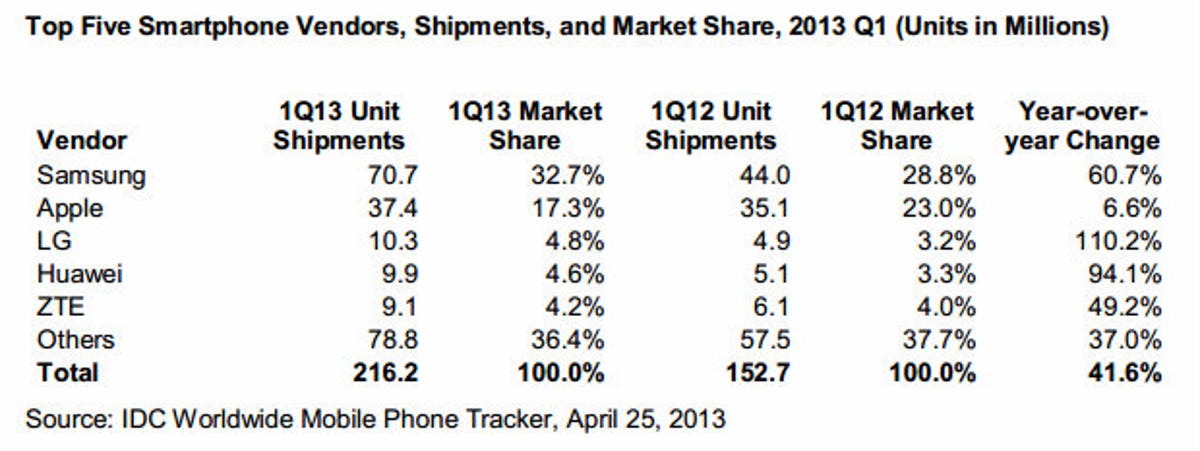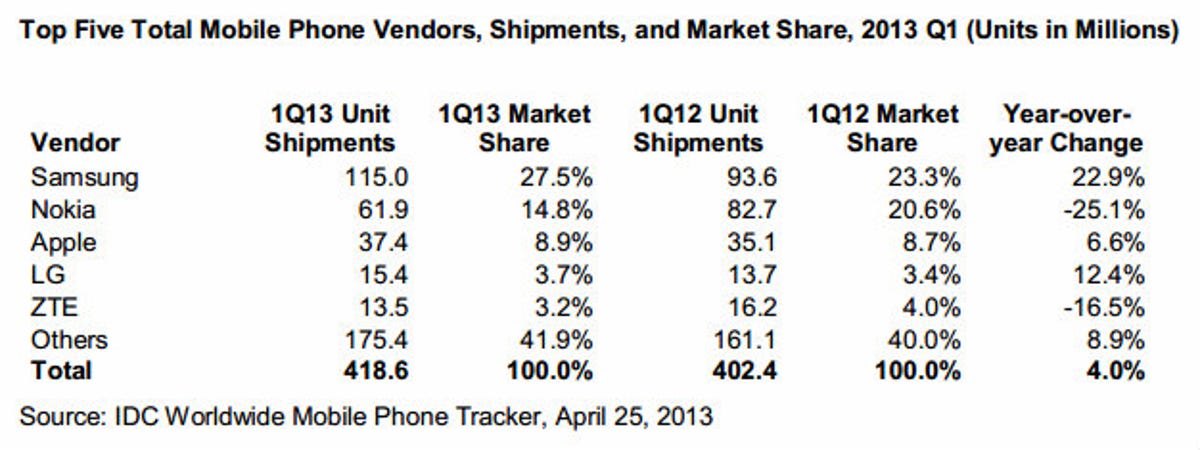It seemed inevitable, and now it has happened: for the first time ever, feature phones have taken a backseat to smartphones in terms of quantities shipped.
In the first quarter of 2013, device makers shipped 216.2 million smartphones worldwide, a volume that accounted for 51.6 percent of total global shipments and that marked the first time smartphones have claimed more than half of all quarterly shipments, according to market researcher IDC.
The smartphone market grew 41.6 percent compared with the first quarter of 2012, but declined 5.1 percent from the shipment tally for the fourth quarter of 2012. The first quarter of the year typically sees a slowdown, especially in comparison with the holiday-shopping-filled fourth quarter.
The first quarter saw a total of 418.6 million mobile phones — both smartphones and the less-powerful feature phones — shipped worldwide, IDC said Thursday.
“Phone users want computers in their pockets,” IDC analyst Kevin Restivo said in a statement. “The days where phones are used primarily to make phone calls and send text messages are quickly fading away.”


IDC/Screenshot by CNET
Samsung continued to exert its dominance during the quarter, shipping 70.7 million smartphones for year-over-year growth of 60.7 percent. Second-place Apple shipped 37.4 million iPhones, up 6.6 percent. Other phone makers saw some seriously big surges: Rounding out the top five, LG shipped 10.3 million smartphones (up 110 percent), Huawei shipped 9.9 million (up 94 percent), and ZTE shipped 9.1 million (up 49 percent).
“A year ago, it was common to see previous market leaders Nokia, BlackBerry (then Research In Motion), and HTC among the top five,” said IDC analyst Ramon Llamas. “While those companies have been in various stages of transformation since, Chinese vendors, including Huawei and ZTE as well as Coolpad and Lenovo, have made significant strides to capture new users with their respective Android smartphones.”
The gains by the Android device makers didn’t do any favors for Apple’s global smartphone market share during the first quarter, which declined to 17.3 percent from 23 percent in the year-earlier quarter. Samsung’s market share rose to 32.7 percent (up from 28.8 percent), while LG, Huawei, and ZTE saw their slices of the market inch up into the 4 percent range.


IDC/Screenshot by CNET
Correction at 5:57 a.m. PT: This story initially gave an incorrect description of LG’s home base. LG is a South Korean company.



